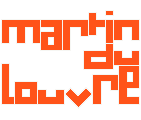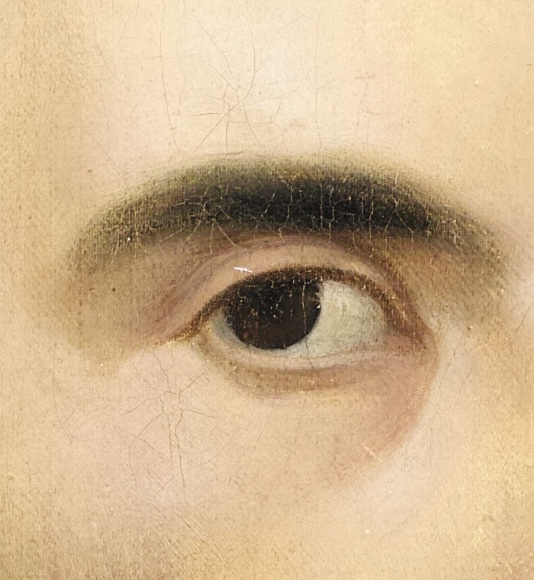« Martin du Louvre is one of a small group of galleries that, even granting our current obsession with the immediately contemporary (of which there is no end of material) seems particularly noteworthy. Owing to the internationalization of the art fair, I know the gallery solely through encountering its material far beyond its Paris home while being consistently impressed by the gallery’s historically informed scholarship. Martin du Louvre gallery focusses on works that primarily date to the complex period « Between the Two Wars” though never succumbing to the temptation of becoming mere purveyors of facile Art Nouveau decoration. To the contrary, Martin du Louvre has unearthed remarkable Futurist works even as it is committed to mining the Classicist Revival central to the 1930s. Admittedly, much of that work was early compromised by the reactionary political climate of the day and, following the Second World War, was further displaced by the growing international taste for Abstract Expressionism. Without meaning to question the larger currents of contemporary art (to which I have added a lifetime of enthusiastic approval), it is still a salutary experience to be brought up short by dealers committed to a sense of art history larger than the immediate thrill of the new, to a consciousness of the significant contributions implicit to an art of supposedly displaced modernist ambitions – which, itself, represents another kind of discovery of the new. »
Robert PIncus-Witten, Prof. Emeritus, Department of Art History, Queens College and the Graduate Center, CIty University of New York. Currently, Contributing Editor, Artforum magazine.
« A l’image de Protée, la Galerie Martin du Louvre dont j’ai suivi le parcours avec intérêt depuis presque vingt ans, contribuant parfois par des préfaces à ses expositions, n’a cessé de se réinventer, donnant le spectacle d’une incessante métamorphose. Son éclectisme transgresseur fonde son identité novatrice.
In Protean fashion, the Gallery Martin du Louvre (whose development I have traced for nearly twenty years, occasionally contributing prefaces to its exhibitions) ceaselessly re-invents itself by offering a spectacle of incessant metamorphoses. Its eclecticism stretches boundaries and forms the basis of its innovative identity.
Je me souviens encore du coup de théâtre à la sortie de l’ascenseur : le visiteur était introduit dans une pièce étonnante avec ses dorures, ses meubles Boulle, ses taffetas rouge Opéra, dignes du boudoir de la princesse Mathilde. Dans ce refuge soustrait au tumulte de la rue, temple suburbain où se respirait l’air d’autres temps, le regard hésitait entre des esquisses de Bouguereau, un immense paysage napolitain de Thuillier, un plâtre original de Carpeaux …
I still remember the theatrical stroke upon exiting the elevator of the gallery landing: the visitor was introduced to an extraordinary room with gilded ornament, furniture by the cabinet-maker Boulle and operatic red taffeta worthy of the boudoir of the princess Mathilde. In this refuge, withdrawn from the brouhaha of the boulevard, in a sub-urban temple where one inhaled the perfume of a bygone era, one’s vision vacillated between sketches by Bougereau, an enormous Neapolitan landscape by Thuillier, an original plaster by Carpeaux…
Quelques années plus tard, Constructivisme et Minimalisme détrônent les témoins de la fête impériale. Rigueur géométrique, aplats de tons crus se substituent au prestige de l’ombre, au bitume, aux patines sonores de Barbizon. Une photographie de boxeur de François Rousseau, débordant de sensualité animale, au grain de peau suintant, mais au regard d’acier aigu comme une dague, rayonne sur des cloisons épurées, qu’un ingénieux système de coulisses module à volonté.
A few years later, Constructivism and Minimalism supplanted all traces of the imperial festival. Geometrical rigor, flattened zones of vivid color held sway over the prestige of shadow, bitumen and the sonorous patinas of the Barbizon forest. Brimming with sensuality, the photograph of a boxer by François Rousseau, whose skin texture was moistened with perspiration but whose steely expression was sharpened like a blade, shone forth from an aesthetic partition, part of an ingenious system of sliding panels that could be modulated at will.
Puis ce sont les séries d’Ellen Kelson vouées à l’exploration des chantiers et machines du groupe Alcoa : la transfiguration du monde industriel a chassé le mystère envoutant des ectoplasmes d’Eugène Carrière. Avec la réalité industrielle mise à nu, une autre poésie s’installe, construisant une nouvelle esthétique.
And then, there was the series by Ellen Kelson dedicated to the exploration of construction sites and machines of the group Alcoa: the transfiguration of the industrial world ousted the heady mystery of Eugene Carrière’s ectoplasms. With the unveiled industrial realities, another kind of poetry emerged, constructing a new esthetic.
Ainsi, avec les ans, un autre ordre s’établit, la Galerie Martin du Louvre va se diversifiant et sa capacité d’évolution confirme qu’elle est plus que jamais une institution dynamique, animée par la curiosité, avide de découvertes. En fait, le générique Martin du Louvre dissimule trois personnalités complémentaires, un Basso Profundo américain, un marchand breton, un designer italien, aux tempéraments affirmés, à l’humour subtil. Le métissage de cette association reflète l’éclectisme de leurs choix, car cette évolution n’est en rien un reniement. Styles, époques, genres, catégories et champs s’entrecroisent, se fécondent, s’enrichissent. La préoccupation principale est de faire dialoguer les oeuvres en fonction de critères, d’affinités électives, qui se réfèrent aux invariants plastiques définis dans ses traités par André Lhote.
Thus, over the years, another order established itself, the Gallery Martin du Louvre would diversify and its capacity to evolve confirms that it is more than ever a dynamic institution, animated by an avid curiosity to discover. In fact, the label Martin du Louvre conceals three complementary personalities of assured personality and subtle humor, an American basso profondo, a dealer from Brittany and an Italian designer. The cross-breeding of the association reflects the eclecticism of the partner’s choices, because their evolution is in no way a denial. Styles, epochs, genres, categories, and fields intersect, are fecundated and enriched. The main preoccupation is that the works dialogue with each other according to the function of their criteria, elective affinities, and in terms of plastic constants as defined in the treatises of André Lhote.
Ainsi, un bronze de Zadkine coudoie sans complexe un violent portrait de Guy Ferris Maynard, disciple de Gauguin, déniché par ces découvreurs, ou La Navigation Fluviale, de Jean-Jacques Feuchère. C’est aussi la confrontation éloquente d’un nu féminin d’Archipenko modelé par grands plans, aux volumes simplifiés, évidés, d’une rigueur mathématique et d’un éphèbe de Lovet-Lorski, l’orfèvre art-déco d’une race d’athlètes. Gonflés d’une sève nouvelle, les corps se tendent, s’étirent, se convulsent, épousent les caprices de la géométrie.
Thus, without solicitude, a bronze by Zadkine rubs elbows with a violent portrait by Guy Ferris Maynard, disciple of Gauguin, unearthed by its discoverers, or River Navigation by Jean-Jacques Feuchère. It is also the eloquent confrontation of a nude by Archipenko modeled with large planes, simplified volumes, hollowed, with mathematical rigor, and of an ephebe by Lovet-Lorski, the Art Déco goldsmith of a race of athletes. Swollen with new sap, the body tightens, stretches, convulses, weds the caprices of geometry.
Ayant mis le temps entre parenthèses, la Galerie Martin du Louvre est toujours le même monde clos, protégé, au rythme ralenti, auquel peintures, sculptures, photographies, objets témoignent d’une émotion particulière, sans rien abdiquer de leur qualité de mystère.
Having put time in a parenthesis, the Gallery Martin du Louvre remains the same enclosed world, protected, slow-moving, wherein paintings, sculptures, photography and objects testify to a particular emotion without abdicating anything of their mysterious qualities.
Et dans ce lieu méditatif, propice à la contemplation, où se pratique le grand écart dans l’union des contraires, le visiteur se trouve accordé au monde des formes, à la vie secrète des choses. Aussi, peut-il rassembler des instants dont sont témoins les objets, avec leur opacité propre, leur force, leur poids de rêve et de fascination.
And in this meditative ambiance, propitious to contemplation, where one performs mental gymnastics among a union of oppositions, the visitor finds himself attuned to the world of forms, to the secret life of objects. He can also accumulate the instants to which the objects bear witness, through their specific opacity, their force, their measure of dreams and of fascination. »
Jean-Roger Soubiran,
Professeur honoraire d’Histoire de l’Art contemporain à l’Université de Poitiers. Ancien conservateur des musées des Beaux-Arts de Cannes et de Toulon.
Honorary professor of Contemporary Art History at the University of Poitiers. Former curator of the Museum of Fine Arts of Cannes and Toulon.

